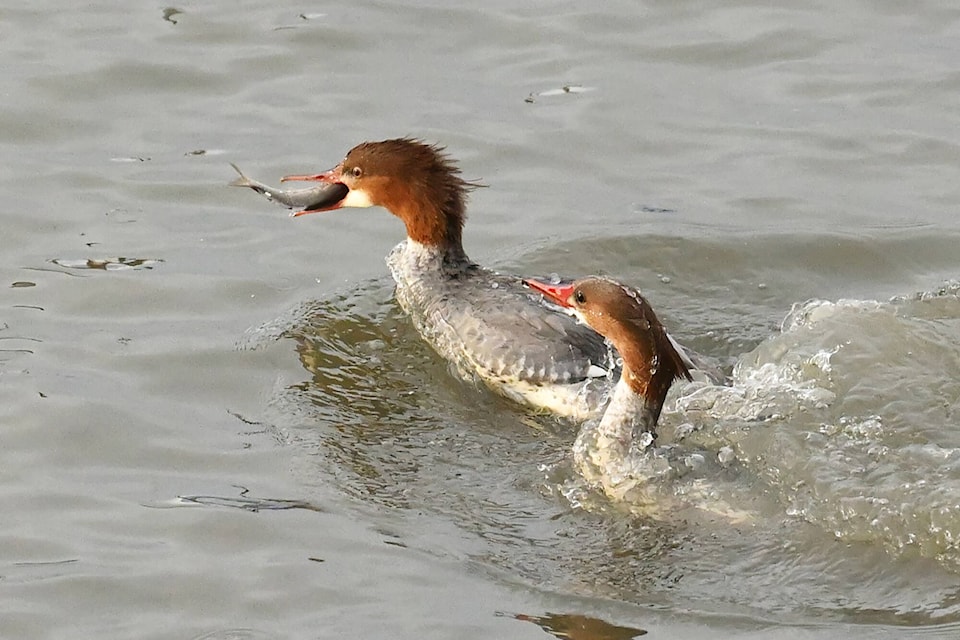Anyone who has gone fishing knows that living fish are hard to handle.
The combination of slimy skin and wriggling bodies makes them difficult to hold and many an angler’s fish has ended up back in the lake.
For the past few weeks up to 100 common mergansers have been putting on quite a fishing show at the Salmon Arm wharf featuring their fishing ability and their tenacity in holding onto their catch.
While most of our familiar types of ducks have wide, flattened bills, mergansers depart from this stereotype with a stiletto-bill well suited to their high-speed underwater fish chases.
Propelled with powerful web feet and a neck built for strikes, they grasp their prey with serrated bills tipped with oversized claw-shaped hooks.
As the successful merganser pops to the surface with its catch, the bird maneuvers the fish into a head-first, one-way journey down its throat.
The serrations lined up on either side of the merganser’s bill may look like teeth, but no adult bird has true, rooted teeth.
However, their teeth-like bill edges do the job of allowing mergansers to hold onto the fish with fierce tenacity.
Read more: Column: Western conifer seed bugs moving in for the winter
Read more: Column: Shuswap winters brighten with the song of black-capped chickadees
The bill serrations don’t work for chewing, so once on the surface the merganser must swallow the fish whole as quickly as it can or risk being robbed by other mergansers or gulls.
I recently watched numerous successful fish ducks (another common name for mergansers) at the wharf come to the surface where they frantically retreated from other mergansers trying to steal their catch. If that wasn’t problem enough, they were harassed from above by ring-billed gulls looking for a chance to swoop down to do an aerial pounce and grab. Calm only briefly returned to the lake when the last tip of the fish’s still wriggling tail disappeared down the merganser’s throat and before another duck emerged holding a freshly caught fish.
Common mergansers can swallow a fish up to 30 centimetres long. That’s about half their body length in one hasty gulp!
We have two types of mergansers that we commonly see in the Shuswap: the common merganser and the hooded merganser. In addition, we occasionally spot red-breasted mergansers. All three have serrated bills that help them catch and keep their prey, and has given them another common name – sawbill ducks!
newsroom@saobserver.net
Like us on Facebook and follow us on Twitter
